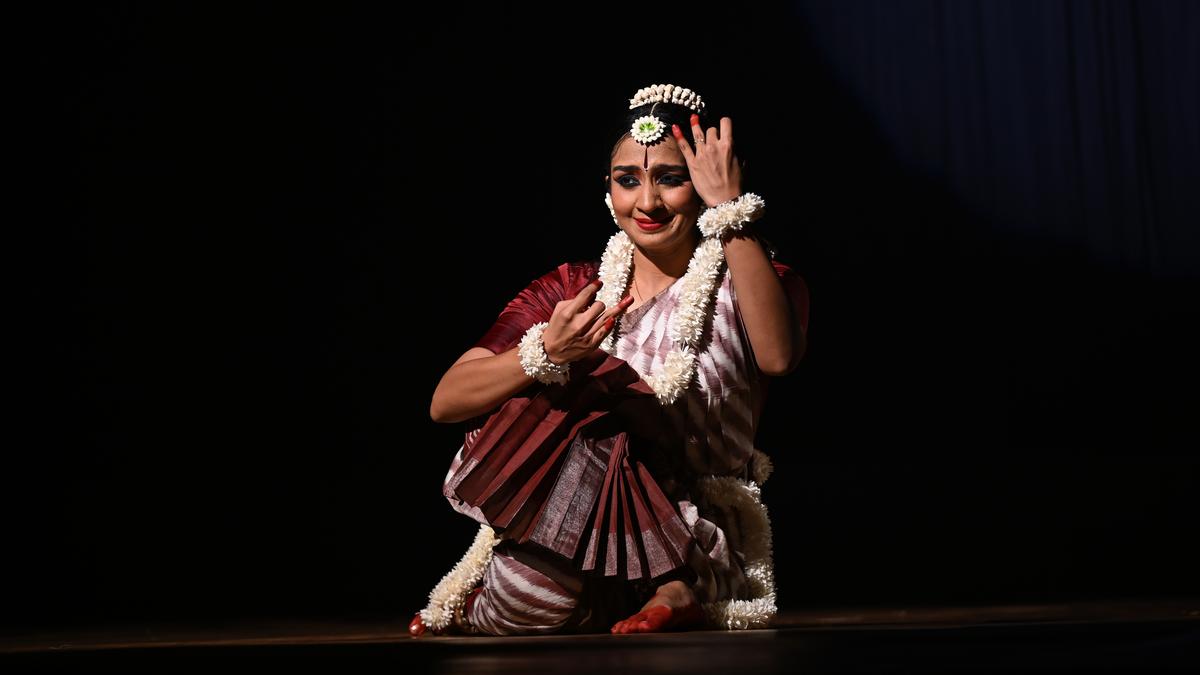Rithu Bharatam â the 26th edition of Natyangamâs annual dance festival â uniquely drew a parallel between the characteristic colours of different seasons and the aesthetic appeal and subtle variations of different banis.
As art is immeasurably deep and expansive, it must have been challenging for the artistes to explore within given boundaries â Kalidasaâs Rithu Samharam, Sangam literature and Ragamala paintings. But each of them rose to the occasion aided by resource persons Dr. Sudha Seshayyan, Sri Shriramkumar, Smt. Monali Bala, Dr .S. Raghuraman.
The fourth day of the festival was themed on âSharad Rithuâ â Rising through Fall. artistically carved on the spatial canvas by Ramya Suresh, senior disciple and daughter-in-law of Indira Kadambi, artistically portrayed the allure of autumn.
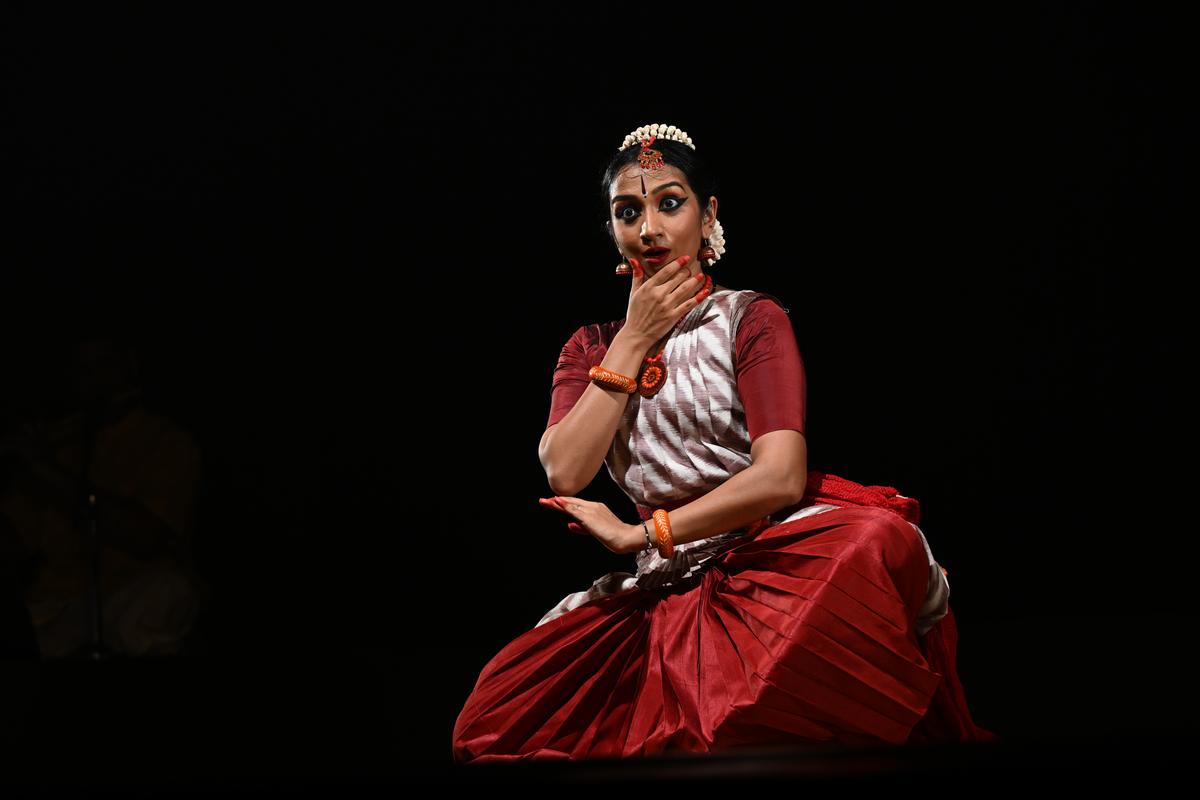
Ramya Sureshâs portrayal was rich in angika and aharya abhinayas.
| Photo Credit:
SRINATH M
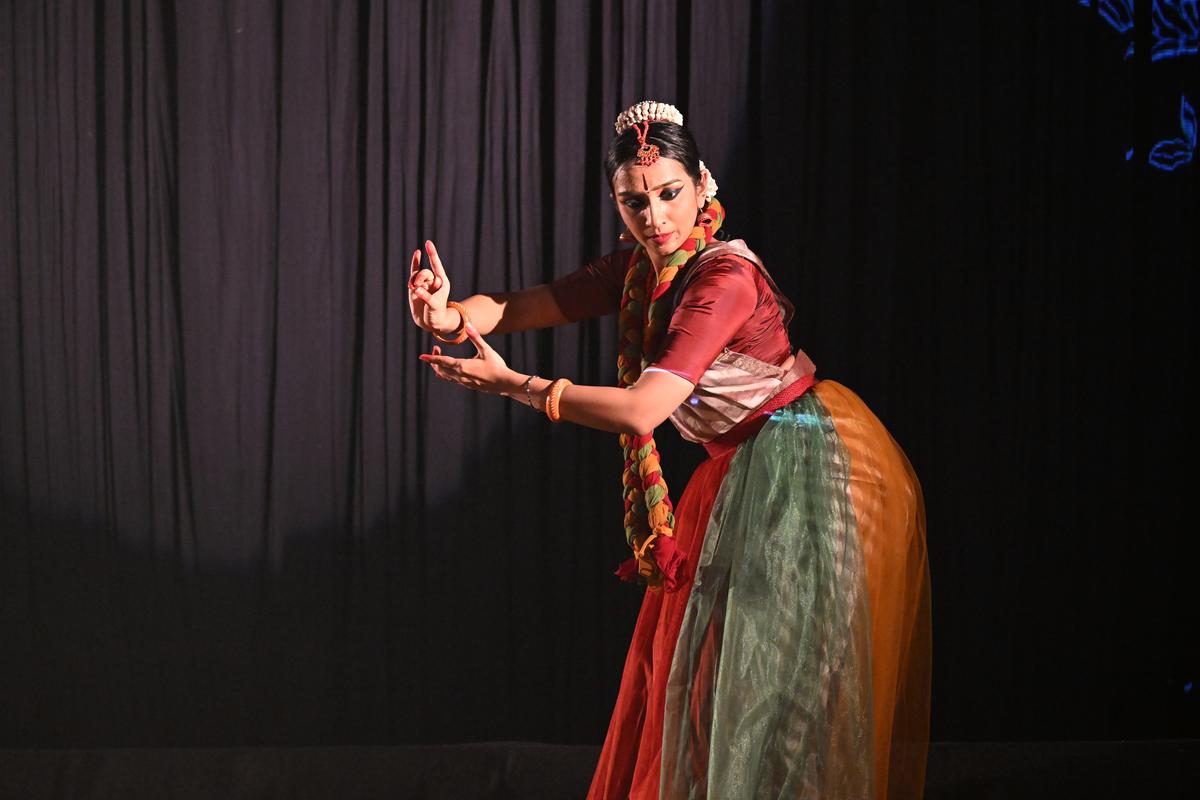
The colours of Autumn matched well with Ramya Sureshâs skirt and the garland around her neck.
| Photo Credit:
SRINATH M
Her costume â a light, flowing colourful skirt with a handmade garland around her neck â and Surya Raoâs exceptional lighting added to the visual appeal.
The orchestra was led by T.V. Ramprasad (vocals), who seamlessly fused languages and genres. Shubha Dhar lent vocal support. On the mridangam was Vinay Nagarajan, Pranav Dath (rhythm pads), Vivek Krishna (flute), Rakshita Ramesh (veena) and Apeksha Kamath (narration). Indira Kadambi did the nattuvangam.
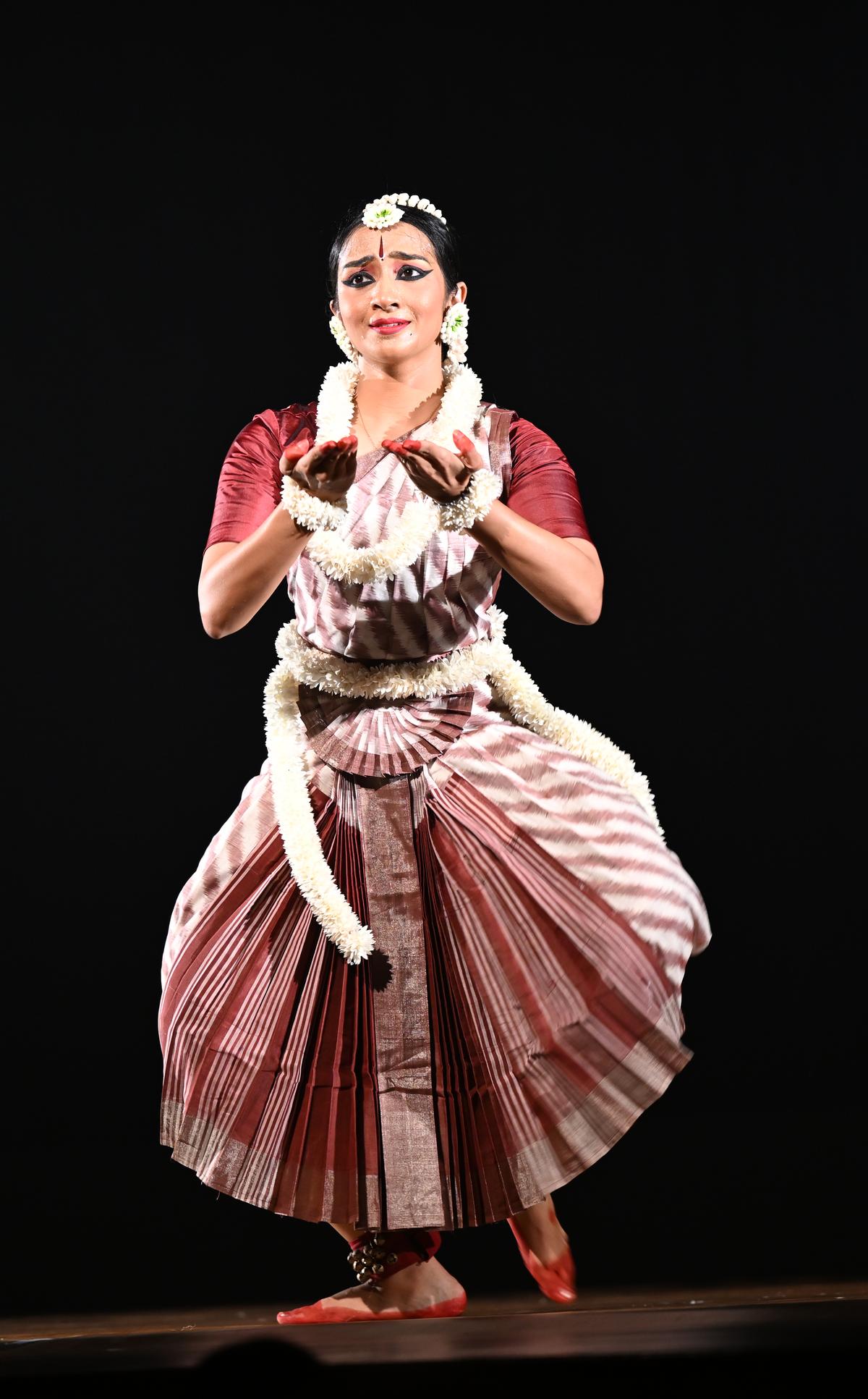
Ramya convincingly depicted the bond between a leaf and the earth.
| Photo Credit:
SRINATH M
Ramya convincingly portrayed the bond between the earth and the fallen leaf, through the wheel of time. Her gentle, fluid and even-paced movements transformed the dancing body into swaying leaves hanging from the branches of trees.
Concept, script and choreography provided a philosophical insight into autumn as the radiant moon and a symbolic tree (with subtle lighting in the background) brought alive a Ragamala painting and suitable verses. The allegory of Sharad Rithu had shades of âThe Pilgrimsâ Progress,â which came as a stark reminder for mankind to shed the outer layers, and introspect, beckoning one to seek liberation.
Ramya concluded by paying obeisance to Devi with a vigorous dhunichi naach (of Bengal) performed during Durga puja.
However, the text and commentary could have been better aligned. Also, the inclusion of more nritta segments would have balanced well with the many abhinaya delineations. Yet, Sharad Rithu left behind lingering moments.
Uma Satyanarayananâs Hemanth Rithu
When winter comes can spring be far behind? â Percy Bysshe Shelley.
âHemanth Rithuâ by Uma Satyanarayanan, a senior disciple of Chitra Visveswaran, showed how she has imbibed all the finer nuances of the art, which reflected from start to finish in her performance.
Her graceful glides, light-footed leaps, and swift movement shifts highlighted the beauty of her nritta.
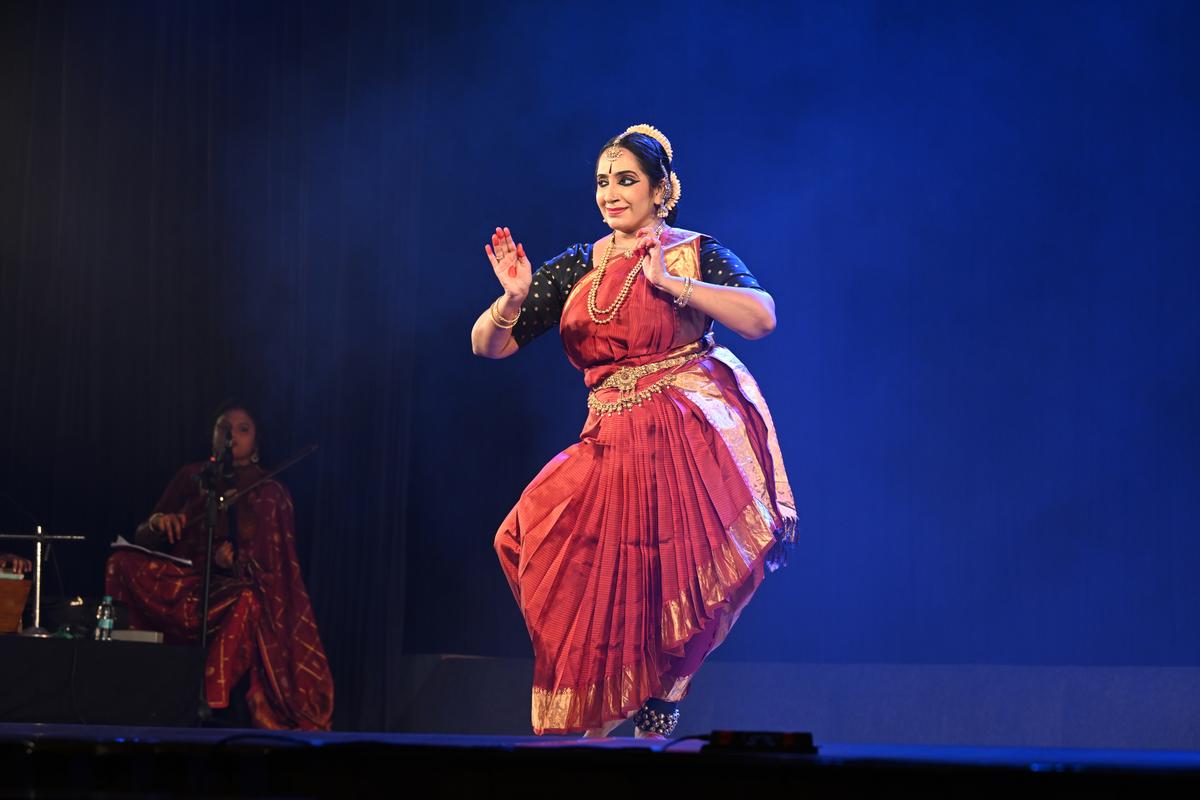
Uma Sathyanarayananâs performance was themed on Hemanth Rithu (Pre-winter season).
| Photo Credit:
SRINATH M
A dancer, musician, actor, choreographer, and teacher, Uma made the best use of versatility to portray current erratic weather patterns.
Umaâs depiction of Hemanth Rithu also awakened us to the long-forgotten beauty of pre-winter, a time of renewal and hope. Sanskrit verses from Kalidasaâs work captured the nip in the air.
Three segments describing the pre-winter season were well-handled. Within a short span, Uma took us on a tour from Dakshinayan (winter solstice) to Uttarayan (summer solstice), showing a variety of festivals through mythology, Sangam poetry, and Ragamala references.
, Umaâs brilliant exposition of puppetry evoked spontaneous applause. The movements of a puppet were remarkably executed to the rhythmic support. The mukhabhinaya had its high and low moments. One desired more intense facial expressions when depicting the lyrical content. The colours of her costume didnât quite symbolise Hemanth Rithu.
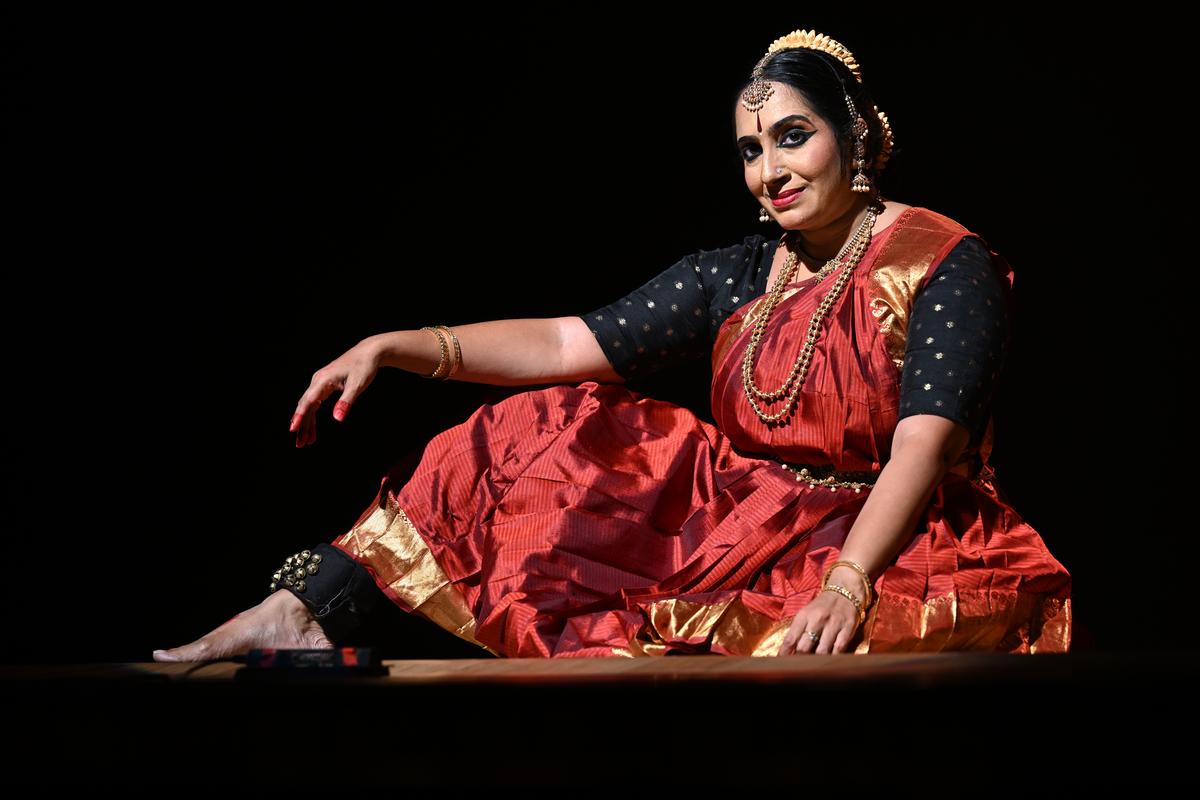
Uma Sathyanarayananâs theatrical skills came through in her portrayal of the nayikaâs anguish and longing for her beloved.
| Photo Credit:
SRINATH M
However, one must compliment her theatrical skills, which came through the Sangam passages as she displayed the anguish and longing of a nayika for her beloved. The audience were taken-up by the banish in Maru Bihag that she sang and emoted.
The performance stood out for the concept, choreography, music composition and soundscape.
Vocalist Janani Hamsini and Sai Santhanam (nattuvangam) need to be a little conscious about the volume when performing on the mike.
Uma concluded her performance with raag Surya, which aptly ushered in the dawn of a new life as the Sun God majestically moved in the Uttarayan direction.
Indu-Nidheehâs Sisiram
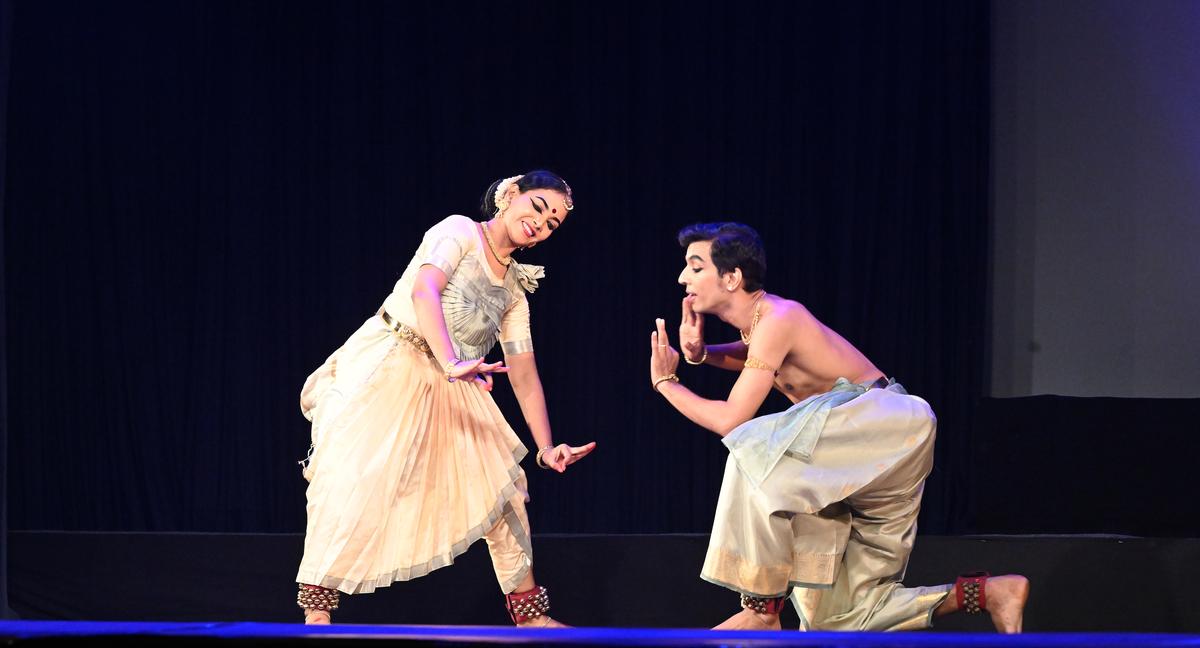
Indu and Nidheesh presented Sisiram.
| Photo Credit:
SRINATH M
Winter is a season of recovery and preparation â Paul Theroux
âSisiramâ â late winter, a prelude to blossoming of flowers, took on a philosophical dimension in its presentation by Indu and Nidheesh Kumar. An abstract concept to be handled using the dance idiom was indeed a huge challenge. The enthusiastic duo presented it with figurative imagery and finesse in form.
The power of the orchestra was truly palpable. Emotive singing by S. Adithyanarayanan stirred the performers. Ragas such as Sahana, Bhairavi, and Ramkali flowed seamlessly. K.P. Rakesh aced the nattuvangam with firm control and clarity. Guru Bharadwajâs pulsating beats on the mridangam were enjoyable and T. Shashidarâs musical intonations on the flute were haunting. Anantakrishnanâs violin and Sowmyaâs veena were equally competent and melodious. In short, the music set the mood for Sisiram.
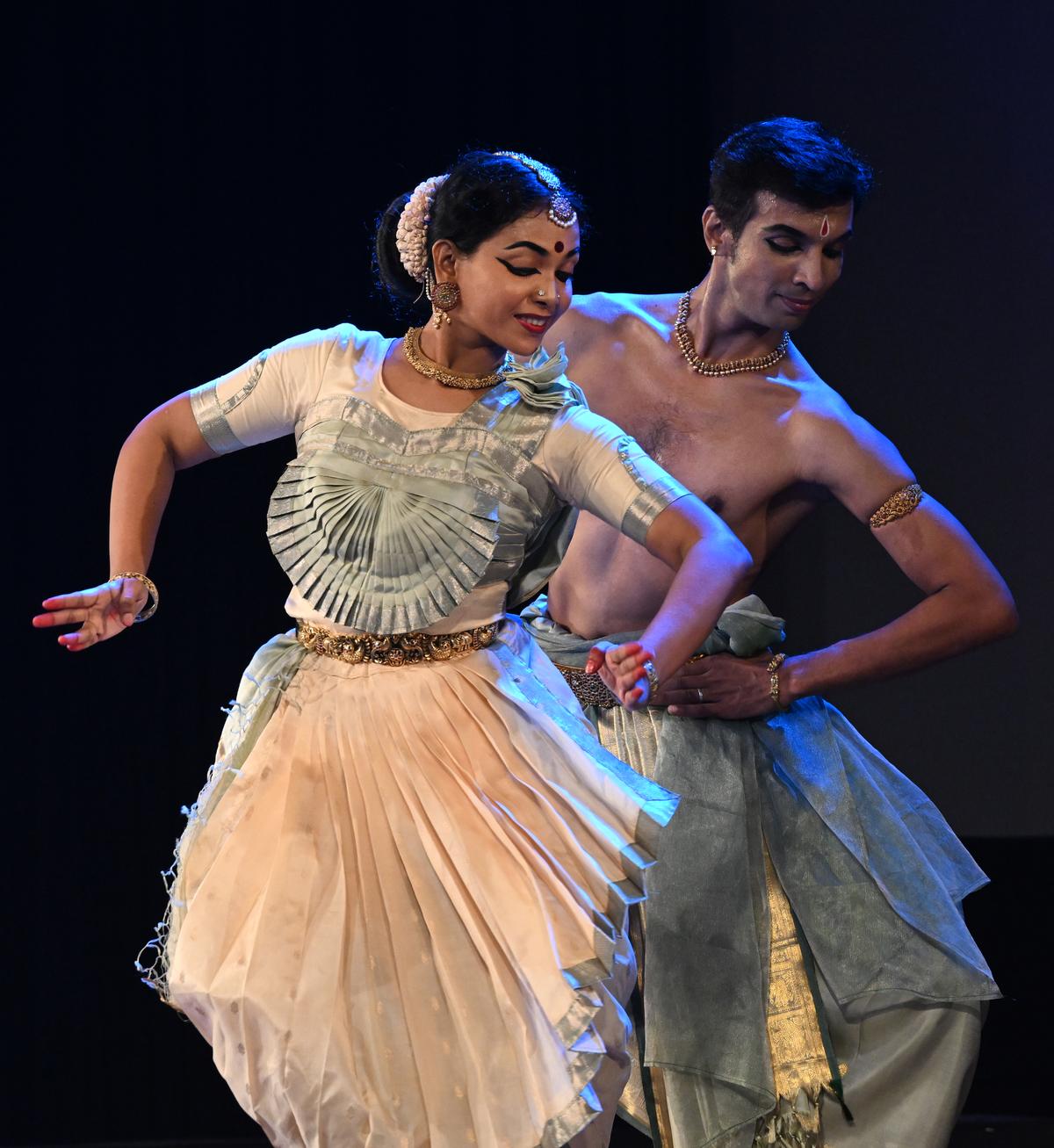
Sisir Rithu was marked by Induâs poginant portrayal and Nidheeshâs powerful depiction.
| Photo Credit:
SRINATH M
The stillness of the season, with its underlying rhythms, was wonderfully conceived using varying Yatis (arranging of different groups of syllables)
Perceiving the four stages of life that one goes through, the use of Yatis in the narrative was unique â Srotovaha (Infancy – wonderment of expanse), Mridanga (childhood – playful ups and downs), Sama (youth – attraction of equals), Damaru (old age – thoughts of death and rebirth) and Gopuchcha ( point of infinity).
The seed of life played the protagonist in the following episodes, which drew a parallel with the tree that has experienced varying seasons.
Nideeshâs delineations were powerful and struck the right chord. Indu, on her part, depicted a pregnant heroine who faces loneliness,. Her sadness came through but in the wise counsel of the tree, hers was a static role for long.
Lyrics in multiple languages such as Sanskrit, Tamil, Malayalam, and Kannada conveyed the varying emotions of Sisiram vis a vis the nature of a mother to be.
Finally, Indu portrayed the rajasic Kali destroying the various aspects of the manifested form â desire, rage, delusion, greed, ego and jealousy. Eventually, she returns to shantam and shivam before the next creation.
Sisiram was a thought-provoking production, which engulfed the concept of Shoonya.
